How to Grow Chili Peppers Indoors and Outdoors
Growing peppers is so much fun! In this post, you will learn how to grow chili plants so that they produce a lot of hot peppers. You can grow peppers can both indoors and outdoors. Growing peppers indoors means that you can grow them all year round (given that you have grow lights).
Chili Pepper Plants can be Overwintered
Growing chilies in a greenhouse equipped with grow lights and something that heats it up can also extend the growing season. Pepper plants can be grown as perennials and easily be overwintered.
There are so many different chili varieties and they can be used in so many different ways. For example, they can be a great addition to your soups, stews, stir-fries, and so on. Chili can also be used to make hot sauces, marmalade, jams, and so on. Finally, the pods and flowers are beautiful so they can, of course, also be grown for ornamental purposes. You ses! There are many reasons to learn how to grow chili!
Chili plants can grow from everything between half a meter to two meters tall. All depending on the species and variety you choose to grow. Many of the chili varieties can live for a few years in warm climates. The plants have small to medium-sized, shiny, green leaves and the shape of the pod (the fruit) can differ in size, shape and color.
They can also be sweet, bitter, and be everything from mild to extremely hot. For instance, paprika, Jalapeño, and Jamaican Bell is more on the mild scale, and we then have peppers like Cayenne up to the world’s hottest peppers such as the Habanero, Carolina Reaper, and Apocalypse Scorpion Chocolate on the hot to extremely hot scale! That is, you can grow peppers of all sizes, shapes, and colors!
The Scoville Scale
The heat the chili fruit is traditionally measured by the Scoville Scale. Carolina Reaper, the hottest pepper in the world according to Guinness World Records, achieved a heat of 1,569,300 Scoville Heat Units (SHU). However, it has been reported that there may be a new hottest chili in the world; the Pepper X. This chili has achieved a heat of 2,480,000 SHU (unconfirmed, as of October 2017).
Why are Chilies “Hot”?
The reason why we perceive chilies as hot is the chemical called capsaicin. This chemical stimulates the nerve endings in the mucous membrane.
When to Germinate Chili Seeds
The best time to germinate (see this Wikipedia article for more information on germination) your chili seeds will, of course, vary depending on where in the world you are living and whether you are growing outdoors and indoors using grow lights.
Even though it is cold, for example, in January and February in the northern hemisphere, the perfect time to start germinating chili seeds is during these months. This will give your pepper plants plenty of time to grow and ripen before the end of the summer.
But don’t worry, you can, of course, germinate your seeds and plant the seedlings up until April it may just affect the heat on your chilies. That is, to get as hot peppers as possible is best to germinate the seeds in January or February because the varieties producing the hottest fruits, like the Carolina Reaper, generally need more time (the seeds germinate slower, the plants grow slower, and so on). I typically start my pepper plants as early as December.
How to Germinate Chili Seeds
Now you know when the best time to plant your chilies and now you are going to learn how to start the germination process (for a more comprehensive post on the subject see the best way to germinate chili seeds). The chili seeds need a lot of warmth to germinate and the best temperature is above 25℃ but below 30℃ (77 – 86 Fahrenheit).
1. Put the Chili Seeds into Water
In the first step, you should put your seeds in some water for about 24 hours (if you plan to grow different varieties remember to put them in different containers).
2. Place your Seeds in Something Moist (e.g., a Paper Towel)
Now, in the second step, after the coating of the chili seeds has been softened, place your chili seeds in a moist paper towel or a peat pellet. Place the seeds somewhere warm and/or place them in a plastic bag or ziplock bag (remember to air them from time to time). How long it will take for the seeds to germinate depends on the species. Capsicum Annuum, for instance, will take 1 to 2 weeks while Capsicum Chinense will take over 2 weeks.
3. Plant the Seeds in Compost
In the thirds, and final, step it’s time to for planting the chili plant. That is, when the seedlings are large enough to handle you can move them to a small container (e.g., a pot). If you are growing your peppers indoors place the pots on a warm and sunny windowsill, and if you are growing outdoors you should place your seedlings in a heated greenhouse.
Keep the soil evenly moist but be aware; if it gets too wet the seedlings may get fungus and die. Grow the chili plants until they are large (about 5 cm tall and with four to six leaves) enough to be moved to larger containers.
An easier way may be to buy a pepper grow kit. Some grow kits even ships with soil! Grow kits are a very good alternative for a beginner.
Growing chili outdoors
In this section, you will learn how to grow chili peppers outdoors. When growing your own chili plants outdoors, they should be gradually acclimatized to outdoor conditions over a period of 7 to 10 days. Once acclimatized, move them into well-prepared beds of fertile, moist, well-drained soil (see my post covering the best soil mix for chili to learn how to make a well-drained soil mix).
Chilies thrive best in a warm climate and they can be grown in pots undercover in a warm greenhouse or polytunnel. Lacking space for a greenhouse? Place your chili plants in a sheltered and sunny place.
If you are growing chilies in a greenhouse you can transplant them into grow bags (maximum 3 per grow bag depending on the size of the bag) or individually into 2-litre containers. Make sure that there is at least 50 cm distance between the pepper plants. When growing in 2-litre containers, it is beneficial to transplant the peppers to larger containers before they start flowering. Move the plants when most of the leaves are stretching towards the edge of the container.
Growing chili indoors
In this section, you are going to learn how to grow peppers indoors. If you are short of space outdoors (e.g., if you are living in an apartment), you can grow chilies indoors. Here’s how to grow peppers indoors. First, put the plants on a sunny windowsill, in a grow box, grow tent, under grow lights. Growing chilies with grow lights will extend the season and you can, of course, germinate your seeds any time during the year. If there is enough space for your chili plants!
When growing peppers indoors you should also move the plants to larger containers as they grow bigger. Start moving them from the small pots to 2-litre pots when the leaves are close to the edges of the container. Continue doing this until they have started flowering. You can, of course, grow the chili plants in larger pots from the start. This may make them grow a large root system instead of growing big and bushy. Thus, if you gradually re-plant them in larger pots they will grow both above and below the soil. A healthy and rich root system equals a healthy plant.
Fertilizing chili
Generally, if you grow chili outdoors you don’t need to add fertilizer to the soil. This, of course, depends on the quality of the soil you plant them in. If the soil is of poor quality you can mix an organic fertilizer into planting holes before transplanting the pepper plants. Continuing feeding the plants every two weeks with a liquid fertilizer after the plants begin to blossom and set fruit.
If you are growing chili peppers indoors or outdoors in containers, you will need to add fertilizer after 3-4 weeks. The best fertilizer for chilies has a balanced NPK ratio. NPK stands for Nitrogen (N), Potassium (P), and Potassium (K) and commercial fertilizer is typically labeled with numbers (5-5-5, for example).
Recently, I have started to use Bat Guano to feed my chili plants. Bat Guano is great because it does not smell and have a nice NPK.
When the first fruits have sets you should feed the plants every week with high potassium fertilizer. This is the time when they need a lot of energy to make hot and tasty chili fruits! Make sure you use the best organic fertilizer or stuff you can find at home. For example, why don’t you make use of your coffee grounds (NPK = 2-0.3-0.6).
Watering pepper plants
Well, of course, when you grow chili plants they need water from time to time. You may wonder “how often should you water the chili plants?”
If you are growing chili in containers you can lift the pots after you have watered your plants. Lift them again when they become dry. By learning the weight of your pots will know when the soil starts to become dry and need watering.
The roots of the chili plants need air so whether you grow your pepper indoors or outdoors make sure that there is good drainage. If you grow in containers you can improve drainage by adding 10 – 30% perlite to the soil.
Keeping your growing pepper plants a little on the dry side will stress them to produce slightly hotter peppers. Note, over-watering have the same effect but it is far riskier. Too much water may get your hot pepper plants infected by fungus. We don’t want our precious chili plants to die, right?!
See my post “How and When to Water Chili Plants” for more information.
Pruning the chili plants
Some chili varieties may produce flowering shoots quite early and to get a better yield you can prune the plants. One way to this is to punch out the growing tip of the first flowering shoots. This will promote more branching and the chili plant will grow bushier.
In the end, a plant with more branches can, of course, produce more hot chili pods. After pruning the chili plants you can add an organic high-nitrogen fertilizer (like blood meal) to help them recover. See this simple guide to pruning pepper plants.

Apocalypse Scorpion Chocolate
Taller varieties of chili peppers (like some of the Capsicum Chinense) may need staking. Varieties yielding big, or a lot of, fruits may also need staking.
If you are growing chilies outdoors, add a thick mulch of organic matter around the base of the plants. This helps conserve moisture and reduce weed growth. If you are cultivating peppers indoors, pollinate chili flowers by using either use a small brush or shake the plants. Pollinating the pepper flowers is easy: brush gently in the middle of the flowers and move to the next (like a bee).
When growing peppers outdoors, you should open the door to the greenhouse from time to time so that the insects can do the pollinating job for you!
Here’s a YouTube Video explaining how to prune chili pepper plants:
Harvesting chilies
It is quite easy to harvest the chili peppers; cut the ripen pods with secateurs or scissors and put them in your container. When growing peppers indoors you just have to wait until the fruits ripen! However, if you are growing peppers outdoors; harvest your pods before the first frost.
Storing chilies
If you followed the chili growing tips above you probably got a lot of nice and hot peppers. So how and where can you store them for later us? Chilies can easily be dried, frozen, or pickled. Drying chilies can be done in the oven or by, simply, hanging them somewhere warm and well ventilated. The easiest way is to use to thread the stem of each chili fruit together.
Hang your thread of chili at your perfect place (warm and well ventilated, remember). A faster way is to dry them in the oven. If you do this, just make sure that you do it on the lowest heat possible. Freezing chili peppers is another great way to store them for later use. Just put your fruits in freezer bags and into the freezer with them!
Now you know how to grow chili indoors, at home, or outdoors in your garden (e.g., in a greenhouse or polytunnel).
Conclusion: What to Make with Chilies
I typically use my homegrown chili peppers in dishes, make hot sauce and jam (see my tomato chili jam recipe, for example). Here is a post listing some great uses of chili peppers that I’ve written.
If you have any questions, suggestions or think that I have missed something very important, please leave a comment.
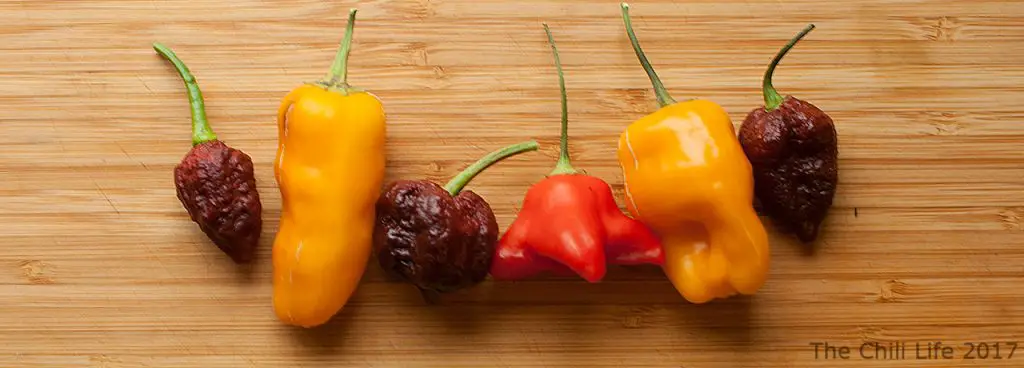
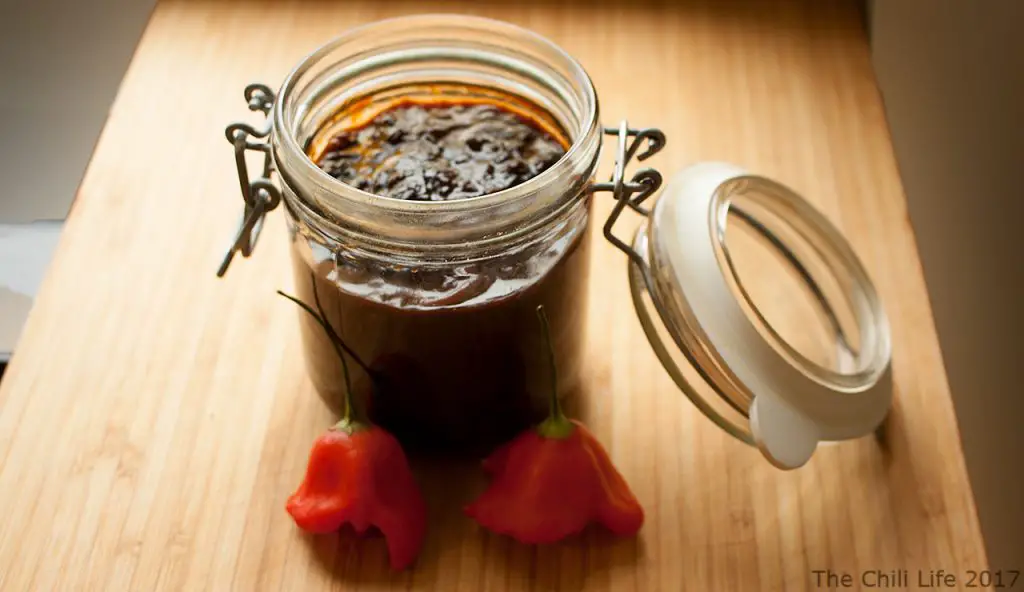
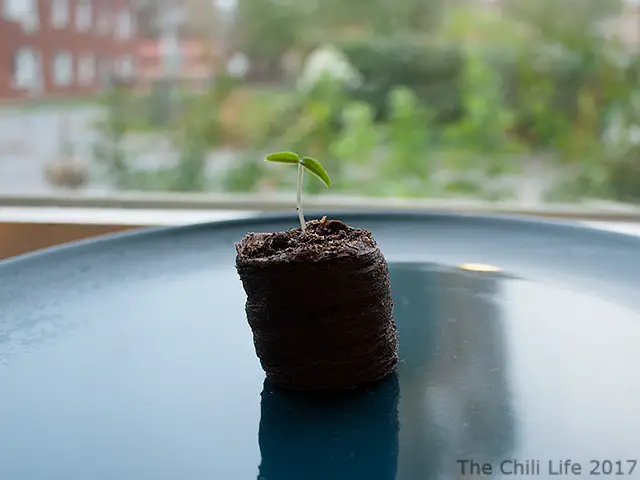
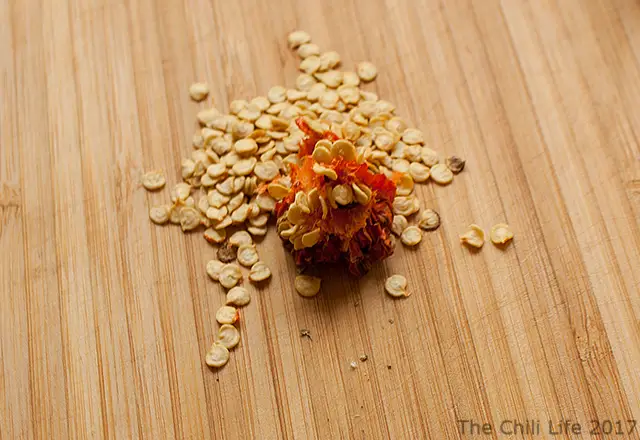
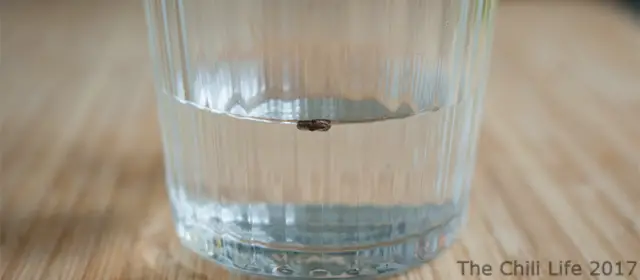

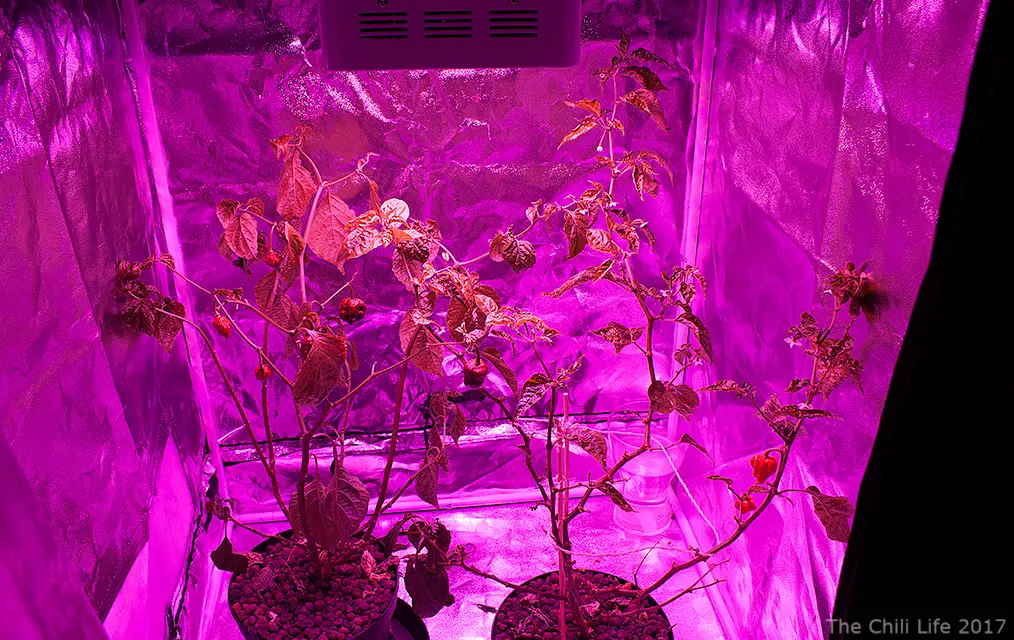

5 Replies to “How to Grow Chili Peppers Indoors and Outdoors”
My jalapeno and serranos peppers that I am growing are not hot, there is a lot of peppers on the bush but not spicy! I also can go to the grocery store and pick out peppers there and it’s a crap shoot, what happened? I used to be able to go to any store and pick out hot peppers and they would be hot! Whats the deal or secret to growing hot peppers?
I have been growing Apache F1 chilli pepper plants directly in my garden soil and the chillies are ripening well. Since the weather is getting more and more autumnal, should I dig them up and put them into pots to bring into a cool room in my house?
Hey Sarah,
Are you planning on over wintering them, yes. If not, I’d suggest that you just let the chilies ripen and harvest them as the ripen.
Should I take the ripened chillies off the plant and leave the green ones to ripen. I had wondered whether by bringing the plants indoors I would be able to continue producing chillies over the next few months.
Hello! I just planted a variety of peppers (jalapenos, habanero, serrano, fresno, hot banana) in a raised bed as starter plants. I’m in SoCal mid May where we’re averaging in the 70’s and sunny but not super hot yet. My main question is how often to water them? My raised bed is large and has good drainage. We noticed the habaneros leaves got a little yellow and wilty and I think we may have underwatered for a few days. I’ve heard a good watering at the roots a couple times a week is good, but I’ve read so many different things. Any advice is appreciated! Thank you!